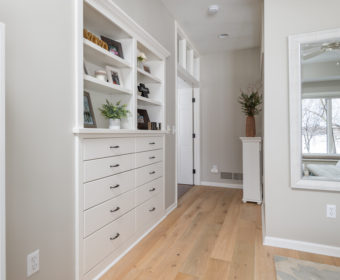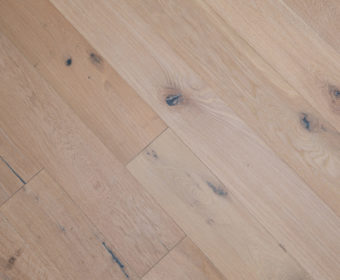When it comes to installing wood flooring in your home, choosing the right width is an important consideration. The width of the flooring can have a significant impact on the appearance and functionality of the space, so it’s important to choose a width that is appropriate for the room in question. In this blog, we’ll explore some tips for determining the correct width to install wood flooring in different spaces in your home.
Consider Room Size
The size of the room is one of the most important factors to consider when choosing the width of your wood flooring. Generally speaking, larger rooms can accommodate wider planks, while smaller rooms may benefit from narrower planks. This is because wider planks can make a large room feel more cohesive and visually appealing, while narrow planks can help to visually enlarge a smaller space.
As a general rule of thumb, rooms that are larger than 20 feet in width can accommodate planks that are 7 inches or wider. For rooms that are between 12 and 20 feet in width, planks that are 4 inches to 6 inches wide may be more appropriate. For rooms that are smaller than 12 feet in width, planks that are 3 inches to 4 inches wide may be the best choice.

Consider Room Style
The style of the room is another important consideration when choosing the width of your wood flooring. Different styles of rooms may benefit from different widths of planks. For example, traditional or formal rooms may look best with narrow planks, while modern or minimalist rooms may look better with wider planks.
Consider Room Functionality
The functionality of the room is another important factor to consider when choosing the width of your wood flooring. For high-traffic areas such as entryways, hallways, and living rooms, wider planks may be more appropriate as they can help to create a cohesive, durable surface. For bedrooms, narrower planks may be a better choice as they can help to create a more intimate, cozy atmosphere.
Consider Flooring Material
The type of wood flooring material you choose can also have an impact on the appropriate width of the planks. Some materials, such as hardwood, can be more prone to expansion and contraction due to changes in temperature and humidity. In these cases, narrower planks may be a more stable option as they can help to minimize the impact of these fluctuations on the overall appearance and durability of the flooring. Though when using wood flooring of a wider width, it’s very possible with our knowledge of woods reactions to these environments, to install in a sound and stable way.

Consider Installation Method
The installation method you choose can also impact the appropriate width of your wood flooring. For example, if you are installing the flooring over a radiant heating system, narrower planks may be a better choice as they can help to minimize the risk of gaps or warping due to temperature changes. When adding in a wider plank flooring, typically 7” or wider, you will want to do what is called glue assist to minimize not only the movement of the wood over time, but also any possible future squeaks in your flooring.
In Conclusion
Choosing the right width of wood flooring for your home requires careful consideration of a number of different factors. Room size, style, functionality, flooring material, and installation method all play a role in determining the appropriate width of your planks. By taking these factors into account and consulting with a flooring professional, you can choose a width that will enhance the beauty and functionality of your space for years to come.
